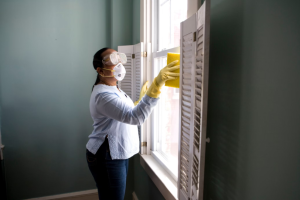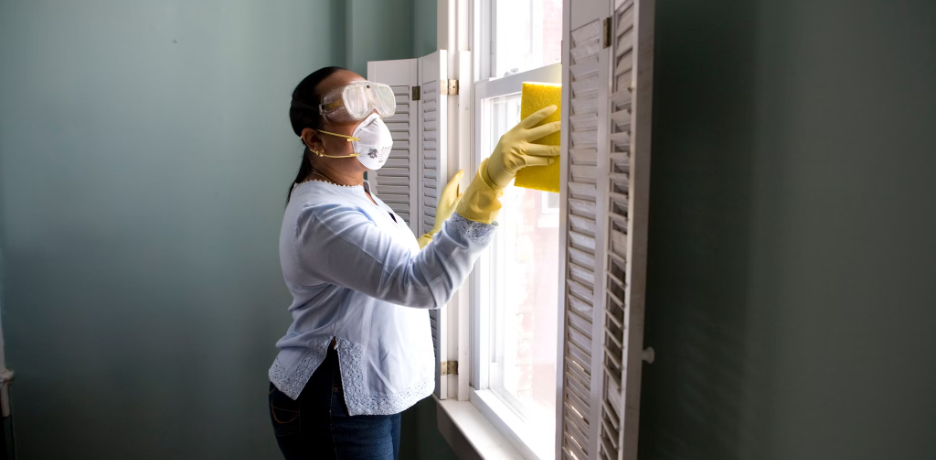How to prevent health risks in the home

Data collected by the National Safety Council (NSC) shows that over 36 million injuries occur annually in American homes. This trend underlines the reality that your home — while meant to be a safe harbor — contains more hazards than you’d think.
These injuries and accidents are largely attributable to preventable causes like poisoning, falls, and fires. These hazards can be heightened if you are the proud owner of a pool or garden and keep chemicals or pesticides around your home.
You can address health risks in the home and minimize your risk of falling ill by taking proactive steps to prevent accidents. Even simple modifications like opening windows to improve airflow can reduce the risk of an accident and help you live with greater peace of mind.
Poor Air Quality
Keeping a clean, clutter-free home can improve your mental health and help you create an interior design style that boosts your well-being. Maintaining a clean space can improve your physical health, too, as poor air quality poses a serious health risk to you and your family. Signs of poor indoor air quality include:
- Unexplained allergic-type symptoms
- Dusty furniture
- High humidity in the home
- Headaches
A musty, unpleasant smell is also a sign that something is amiss with your air quality. This phenomenon can be a serious issue, as mold and mildew can worsen existing conditions and may lead to respiratory problems. Mold exposure can even be fatal if left unchecked and poses a health risk to immunocompromised people.
Investing in an air purifier can enhance your air quality and improve your well-being. You needn’t break the bank on a new HVAC system, either. Today, you can find the right air purifier by:
- Looking for a purifier with activated carbon filters and ionizers;
- Matching Clean Air Delivery Rate (CADR) with your room size;
- Opting for a model with a quiet fan and a spin rate that isn’t too loud;
- Searching for energy-efficient, easily maintained options to reduce long-term costs.
Buying a high-quality purifier can help you avoid health issues related to poor air quality. This can boost your energy and help you fight off illnesses like seasonal colds or allergies.
Stress at Home
Stress at home is easily overlooked when considering the greatest health hazards that you and your family face. However, research complied by the American Psychological Association (APA) shows that the negative health consequences of stress include:
- Musculoskeletal Problems: Stress causes tension in the body that leads to headaches, migraine, and injuries. Stress can also cause muscle atrophy and heighten the risk of chronic pain.
- Respiratory: Stress causes shortness of breath and rapid breathing which may worsen respiratory illnesses like asthma. Acute stress can cause sudden asthma attacks, too, which may lead to hyperventilation and panic attacks.
- Cardiovascular: Acute stress triggers the cardiovascular system and increases your heart rate. This will increase your risk of hypertension, heart attack, and stroke.
You can address stress as a health hazard at home by creating a dedicated, stress-free space. This stress-busting space can aid your efforts to relax and recover after a hard day at work and can be a refuge from the hustle and bustle of everyday life.
Empower your efforts to overcome daily stress at home by investing in hydrotherapy. Hydrotherapy can reduce stress by mitigating muscle soreness and balancing your autonomic nervous system. Spending time in the tub can help you process your emotions and aid your efforts to get a good night’s sleep.
Depending on your budget, you may consider redecorating your bathroom or installing an outdoor hot tub to take advantage of the health-enhancing benefits of hydrotherapy. Even subtle changes — like buying a houseplant to purify the air in your bathroom or switching up outdated tiles — can improve your well-being and help you overcome the health challenges of raised stress.
Trips and Falls
NSC data shows that accidental falls are the second-most common source of preventable deaths at home. While you can’t bubble-wrap yourself or cushion every sharp corner, you can take a few proactive steps to lessen the risk of a fall, including:
- Installing age-appropriate accommodations like handrails, ramps, and small steps;
- Improving lighting throughout your home to minimize the risk of tripping over unseen hazards;
- Practicing balance-boosting exercises ensures you can regain your balance after a minor trip.
These steps will proactively minimize your risk of a trip-related accident and will enhance your ability to avoid injuries when falling. You can also consider taking up hobbies like judo or gymnastics, which will help you learn to fall without causing further harm.
Conclusion
Addressing common health risks in the home can minimize your risk of injury or illness while improving your mental health and well-being. This is key, as your home should strengthen the bond between your mental and physical health while improving your fitness and happiness. Get started by making a few modifications to enhance your air quality, reduce visual clutter, and create a space that helps you destress.
Guest post by Charlie Fletcher
Tags: anxiety, behavioral health, crossroads health, health risks, health risks in home, healthy living, home health risks, mental health awareness, self care, well being

